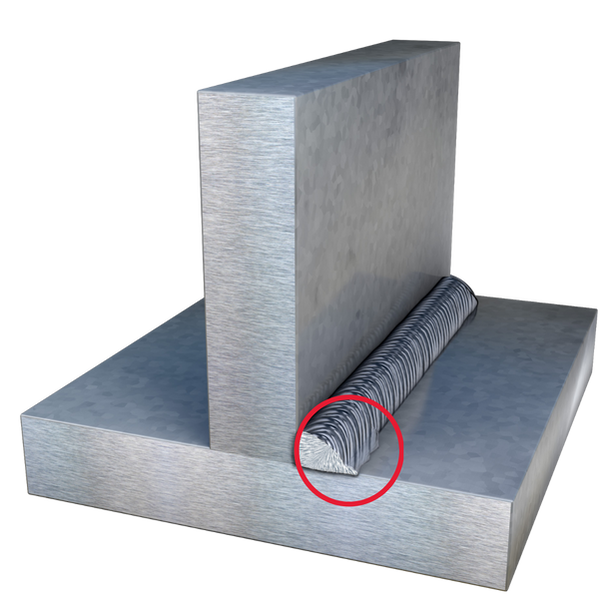Your Complete Handbook to Preventing Weld Undercut Like a Pro
Your Complete Handbook to Preventing Weld Undercut Like a Pro
Blog Article
Mastering the Art of Welding: Exactly How to Prevent Undercut Welding Issues for Flawless Fabrication Outcomes
By understanding the root causes of undercut welding and executing reliable techniques to prevent it, welders can elevate their craft to new degrees of excellence. In the pursuit of flawless construction results, mastering the art of welding to prevent undercut problems is not simply a skill but a necessity for those striving for excellence in their job.
Comprehending Undercut Welding

To prevent undercut welding, welders should guarantee proper welding parameters, such as adjusting the existing, voltage, travel speed, and keeping the right electrode angle. By recognizing the causes of undercut welding and executing preventative measures, welders can achieve top notch, structurally audio welds.
Root Causes Of Undercut in Welding
Recognizing the factors that contribute to undercut in welding is necessary for welders to create high-grade, structurally audio welds. Damaging occurs when the weld metal does not properly fill up the groove developed in between the base steel and the formerly transferred weld steel. A number of factors can lead to damage in welding. One common cause is too much heat input. Welding at heats for prolonged durations can result in the base steel melting greater than wanted, causing damage. Poor welding wrong or present welding speed can additionally add to damage. Insufficient current may not supply enough warm to thaw the base and filler metals appropriately, while excessive rate can avoid appropriate combination, causing undercut. Furthermore, inappropriate electrode angles or wrong torch control methods can create locations of reduced weld metal deposition, advertising undercut. Recognizing these reasons and executing appropriate welding methods can assist prevent undercutting concerns, ensuring strong and durable welds.
Techniques to avoid Undercutting

To minimize the threat of damaging in welding, welders can employ tactical welding methods focused on boosting the quality and integrity of the weld joints. One effective approach is to adjust the welding specifications, such as voltage, present, and travel rate, to ensure proper warm input and deposition. Preserving an ideal electrode angle and making certain consistent travel speed can also help stop undercut. Additionally, utilizing the correct welding strategy for the specific joint setup, such as weave or stringer beads, can add to reducing damaging. Preventing weld undercut.
Additionally, correct joint preparation, consisting of guaranteeing tidy base products complimentary of pollutants and utilizing the proper welding consumables, is crucial in preventing undercut defects. Employing back-step welding techniques and regulating the weld bead profile can additionally assist distribute warmth evenly and lessen the danger of undercut. Normal assessment of the weld joint throughout look at more info and after welding, as well as applying quality control measures, can help in identifying and attending to damaging problems quickly. By executing these techniques vigilantly, welders can accomplish remarkable construction results with minimal undercut problems.
Significance of Proper Welding Parameters
Picking and keeping appropriate welding specifications is important for achieving effective welds with marginal flaws. Welding parameters describe variables such as voltage, existing, travel rate, electrode angle, and protecting gas flow rate that straight impact the welding procedure. These specifications must be meticulously changed based on the kind of product being welded, its thickness, and the welding technique employed.
Proper welding parameters make certain the ideal quantity of warm is put look at this website on thaw the base steels and filler product consistently. If the criteria are set too expensive, it can cause excessive warmth input, causing burn-through, distortion, or spatter. On the various other hand, if the specifications are as well reduced, incomplete blend, absence of penetration, or undercutting may happen.
Quality Control in Welding Workflow

Final Thought
To conclude, mastering the art of welding needs an extensive understanding of undercut welding, its causes, and methods to avoid it. By making sure correct welding specifications and applying quality guarantee methods, perfect fabrication results can be accomplished. It is important for welders to consistently pursue quality in their welding procedures to prevent undercut problems and produce top notch welds.
Undercut welding, an usual problem in welding processes, happens when the weld steel does not appropriately load the groove and leaves a groove or clinical depression along the bonded joint.To prevent undercut welding, welders must guarantee proper welding criteria, such as changing the present, voltage, traveling rate, and keeping the right electrode angle. Poor welding present or incorrect welding rate can additionally add to damage.To reduce the threat of undercutting in welding, welders can employ tactical welding strategies intended at improving the quality and honesty of the weld joints.In conclusion, grasping the art of welding requires a detailed understanding of undercut welding, its reasons, and techniques to stop it.
Report this page